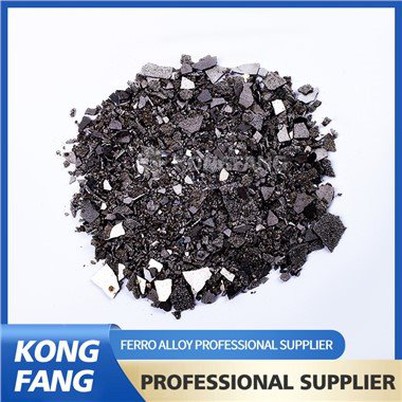The production process of silicon carbide
Leave a message
Due to its low natural content, silicon carbide is mainly artificial. The common method is to mix quartz sand with coke, use the silicon dioxide and petroleum coke in it, add salt and sawdust, place them in an electric furnace, heat them to a high temperature of about 2000 ° C, and obtain silicon carbide micropowder after various chemical processes.

Silicon carbide (SiC) has become an important abrasive due to its high hardness, but its application range exceeds that of ordinary abrasives. For example, its high temperature resistance and thermal conductivity make it one of the preferred kiln furniture materials for tunnel kilns or shuttle kilns, and its conductivity makes it an important electric heating element. To prepare SiC products, SiC smelting block [or SiC granular material] should be prepared first. Because it contains C and is super hard, SiC granular material was once called emery. However, it should be noted that its composition is different from that of natural emery (garnet). In industrial production, SiC smelting block usually uses quartz, petroleum coke, etc. as raw materials, assists in recovering materials and waste materials, and after grinding and other processes, it is blended into furnace charge with reasonable proportion and proper particle size (In order to adjust the permeability of the furnace material, an appropriate amount of wood chips needs to be added, and an appropriate amount of salt needs to be added when preparing green silicon carbide.) It is prepared at high temperature. The thermal equipment for preparing SiC smelting blocks at high temperature is a special silicon carbide electric furnace. Its structure is composed of furnace bottom, end wall with electrodes embedded inside, detachable side wall, furnace core body (full name: electrified heating body in the center of the electric furnace, generally installed in the center of the furnace charge with graphite powder or petroleum coke according to certain shape and size, generally circular or rectangular. Its two ends are connected to the electrode), etc. The firing method used in this electric furnace is commonly known as buried powder firing. It starts heating as soon as it is powered on, and the temperature of the furnace core is about 2500 ℃ or even higher (2600-2700 ℃). When the furnace material reaches 1450 ℃, SiC begins to synthesize (but SiC is mainly formed at ≥ 1800 ℃), and CO is released. However, when the temperature is ≥ 2600 ℃, SiC will decompose, but the decomposed Si will form SiC with the C in the furnace charge. Each group of electric furnaces is equipped with a set of transformers, but during production, only a single electric furnace is supplied with power to adjust the voltage according to the electrical load characteristics to maintain constant power. The high-power electric furnace needs to be heated for about 24 hours, and the reaction of generating SiC after power outage is basically completed. After a period of cooling, the side wall can be removed, and then the furnace material can be gradually removed.



